Dog feeding recommendations, including how much to feed a puppy, are merely a general suggestion. Here’s how to properly feed your dog.
The amount of food to feed your dog will vary depending on the dog’s size, age, breed, degree of activity, and genetics. How much food to give your dog can also depend on whether it has been neutered or spayed.
There are no formal food recommendations for dogs because of this. Calories determine how much food to give your dog, just as they do for humans, and each dog has a different caloric requirement.

According to the American College of Veterinary Nutritionists, there are between 300 and over 700 calories per cup in various brands of kibble. That represents a huge gap. Thankfully, the majority of pet food producers now provide the number of calories in a cup of their food.
The “resting energy requirement (RER)” is a general term for the amount of calories your dog needs to consume to maintain their ideal weight. Divide the dog’s optimum weight in pounds by 2.2 to get kilos to get your dog’s RER. Then add 70 and multiply that result by 30.
So let’s suppose your dog should weigh 90 pounds at its ideal size. 90 lb divided by 2.2 equals 40.9 kilograms. Add 70 and multiply by 30 to get 40.9 x 30 = 1,227 + 70 = 1,297. Therefore, a 90-pound dog needs 1,297 calories per day (without additional exercise) only to carry out basic bodily activities.
Examine the meal you are feeding next. Let’s suppose each cup has 380 calories. Therefore, divide 1,297 calories by 380, or the number of calories in one cup of food, to get the following result: An average 90-lb dog needs 3.41 cups of food per day divided by 1,297 380. However, not all dogs are average, and all dogs need get at least some exercise.
To maintain a healthy weight, the RER must be multiplied by the dog’s energy requirements and then adjusted upward or downward. Since individual dogs can differ significantly from estimated numbers, you need still make adjustments to the number you receive in order to get your dog to a healthy weight and then keep it there.
Obese dogs should be fed at the RER for their optimal weight in order to shed weight. Working dogs who are active can require two to five times the RER to maintain weight. The RER x 1.6 is required for typical active neutered dogs. With typical labor, intact adult dogs require RER x 1.8.
At the very least, check your dog’s body once a month with your touch if you can’t weigh him on a scale. He should always have ribs that you can feel and a waist that you can see when you glance down over his topline. Your dog is too overweight if his ribs aren’t discernible. In these conditions, a lower-calorie dog food might be helpful to some extent, but ultimately, he will need to have smaller servings each day.
Do away with snacks and treats. For the majority of dogs, reducing your dog’s meal quantities by 25% is a straightforward, secure, and efficient method of weight loss. Take part of the kibble he would normally receive at mealtime and use that for treats if you’re teaching your dog.
Measure: To measure your dog’s food, use a regular measuring cup. Do not load food into the top centromedicorelaxesalute.it of the cup; instead, use level measures!
Nutrients: Choose a food that is formulated to fulfill the American Association of Feed Control Officials (AAFCO) recommendations for nutrients. The majority of mature dogs thrive on “maintenance” foods. Moms, puppies, and energetic dogs require extra calories, protein, and fat. These canines require food designed for “all life stages.”
Schedules: All dogs should be fed at least twice daily, and pups should be fed at least three times daily. Never give your dog a free-choice diet. Even those dogs who don’t gulp it up right away shouldn’t be free-fed because the majority of dogs will at least try to eat it all in one sitting. If you let your dog “graze” all day, it will take you much longer to realize that he no longer has an appetite.
Table scraps: Unless there is a need (such as a fussy eater, a senior dog, or a dog who is on boiled ground beef or chicken with rice owing to an upset digestive tract) or unless you reduce his regular food quantity correspondingly, don’t ruin all your hard work by offering your dog table scraps. If additional “leftovers” account for more than 25% of his daily caloric intake, you run the risk of throwing off the balance of a “complete and balanced” diet.
For more information about any of our products please contact us via our contact form or visit or Facebook Page.
When traveling in your car with your dog, restrain him with a safety harness and seat belt, or confine him to a properly secured crate. Also, avoid letting your dog sit on your lap or drive with his head out the window.
Most of us enjoy traveling with our dogs. And in most cases, this entails transporting them in our car, truck, or SUV. Yet, poor driving habits can turn a simple journey into a trip that changes your life. Both canine and human passengers must adhere to good driving safety. Dogs injured in cars due to poor safety precautions are a common occurrence among emergency veterinarians. This applies to situations where passengers are not properly restrained, such as sitting on the driver’s lap or sticking their heads out the window.
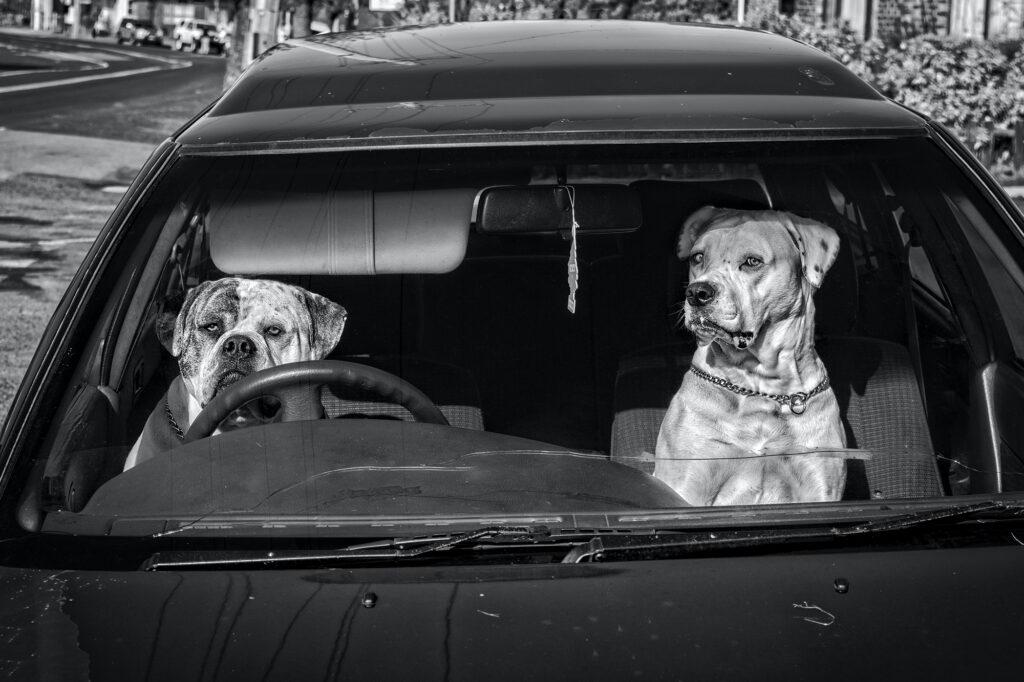
It is really alluring to drive with your small dog on your lap. They are adorable and enjoy cuddling. And what possible harm might your six-pound Maltese or Chihuahua cause by riding in your lap?
Your airbag is likely to deploy if you are in an accident. The airbag is designed to keep you safe in a collision. As the airbag inflates, if your small dog is sitting on your lap, the force of the airbag could seriously hurt it. Little dogs hit by an airbag frequently sustain fractures and spinal cord trauma that causes paralysis.
In a car accident, unrestrained dogs can potentially become projectiles. Being catapulted into the windshield and suffering a head injury is typical. Little dogs being catapulted out of the driver’s side window during an accident is another frequent occurrence seen by emergency vets. This occurs when the tiny dog is seated in the driver’s lap with their paws on the door and the driver’s window is down. In the event of an accident, the small dog may fly out the window and strike the pavement below, landing on its head. Traumatic brain injury or sudden deaths are frequent outcomes of this kind of injury.
The best way to transport a dog safely in a car is in a secured travel container made specifically for use in cars or airplanes, or harnessed into a dog car safety belt or harness. Tiny dogs can travel in a car seat made for dogs as long as they are restrained with a safety harness.
Big dogs frequently ride in the rear seat, away from air bags, but they still run the risk of getting hurt if a window is left open. As a result of flying objects, dogs who ride with their heads out the window are more likely to sustain eye and/or ear problems. Unrestrained dogs jumping out the window of a moving car are another frequent injury. When they fall on the pavement, these canines could break a limb. Also, owners have been known to mistakenly run their own dogs over after the animal jumped out the back window, according to emergency vets!
When the windows are rolled down in your automobile, installing a dog window guard or screen on each rear window can assist safeguard your dog. There are wire mesh panels made of welded steel that are specifically manufactured to fit your car’s rear windows. There are available screens made of polyester mesh cloth. When installed, each of these screens and panels enables regular window functioning in your car.
Accidents can occur when we least anticipate them. Don’t allow poor driving practices disrupt your outing!
You can always contact us about our Posh Dog Knee Brace or any other supplements for you dog by our contact page or visit our Facebook Page as well.
Hey guys, Nikki with posh dog knee braces here. So, first of all I can’t stress enough the need to do some form of physical therapy. We send every patient home with a 12 week recovery calendar and exercises, however, we need you to keep those up for the full 9 months. Whether you find a holistic or physical therapy clinic to help you with water treadmill or PT, you need to keep you dog active in some way.
Lack of activity will cause a joint to “lock up” after the scar tissue has formed, meaning there is not going to be the same amount of range of motion there. There also can be loss of muscle. The brace alone is not enough to build muscle, you will need to keep walking your dog, and doing some form of exercise program. This is needed whether you do surgery, Conservative management, or bracing. Doing nothing will result in loss of muscle, loss of range of motion, and most likely arthritis and pain down the road.
We have a lovely list of holistic veterinarians and rehab clinics around the US and in Canada, so reach out if you are struggling to find a clinic. The clinics on our list are partners with posh, and know how to treat our patients, as well as measure and fit the brace if needed. We do have some things we can have you do from home as well, if PT is just not in the budget. I am happy with walks, simple exercises, and passive range of motion.
What is PROM? This is you gently bending and flexing the knee, as well as the hip. I have videos we send to you on how to do this stretching, but this is key to keep flexibility in the joint, and not end up with lack of movement there.
Please let us know if you have any questions, poshdogkneebrace.com or visit our Facebook Page. Thanks!
Although vitamin E is beneficial and secure for dogs, not all canines require it. But, dogs taking fish oil may benefit from taking a vitamin E supplement.
Although knowledge about vitamin E dosages may leave you dizzy, vitamin E is healthy for dogs. The recommended vitamin E dosages for dogs seem to vary widely. Even worse, dosages may be indicated in milligrams or international units (IUs) (mgs).
The fact that there are two main types of vitamin E—natural and synthetic—with varying potencies and, consequently, various vitamin E dosages, just adds to the confusion. Although there is a lot to take in, we have the information you require regarding vitamin E supplements for dogs.
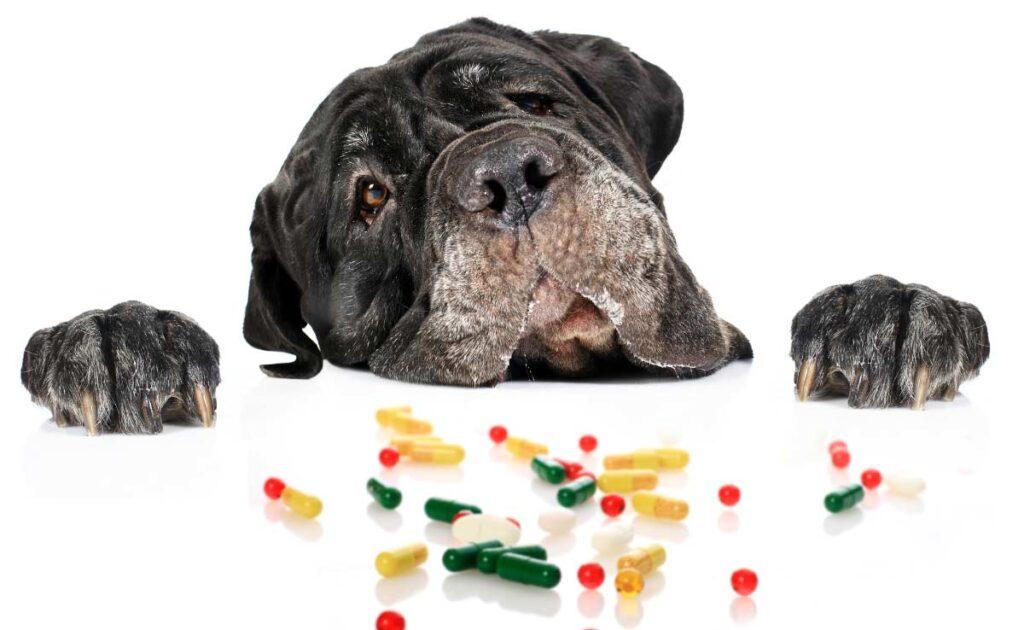
Since vitamin E is an antioxidant, it aids in defending the body’s cell membranes. It contributes to fat metabolism, strengthens immunity, and increases fertility. Your dog’s skin, hair, muscles, and vision will all benefit from it.
Although canines can safely consume vitamin E, not all dogs require a supplement. Canine vitamin E insufficiency is uncommon because most dogs consume plenty of it in a balanced diet. If you’re worried, your veterinarian can order blood tests to determine whether your dog actually has a deficiency.
It’s okay to apply topical vitamin E oil to dogs. Alpha tocopherol and an oil, like virgin olive oil, should be listed under ingredients. It can be used to paw pads, dry cracked nostrils, and irritated or crusty skin regions.
Vitamin E may be advantageous for dogs using fish oil. The beneficial polyunsaturated fatty acids in fish oil for your dog can eventually deplete the body’s vitamin E reserves. The tiny quantity of vitamin E found in fish oil supplements mostly serves as a preservative and is typically present in proportions that are too low to raise your dog’s levels. For dogs getting fish oil, the most typical guideline for vitamin E supplementation is 400 IU of vitamin E for every 1,000 mg of fish oil.
You must first identify the type of vitamin E present in the bottle you bought in order to estimate the recommended dosage for your dog:
Vitamin E occurs naturally as d-alpha tocopherol (d-).
You’ll then need to perform some math. Keep in mind: 2 mg of synthetic vitamin E (dL-) are equivalent to 1 mg of natural vitamin E (d-).
You may also need to convert IU to mg or mg to IU, which isn’t difficult:
So, using these formulas, here are examples:
Of course, aside from the fish oil indicated above, that still leaves open the question of how much vitamin E to give your dog. As a result, we list a few issues in our chart below, along with suggested dosages, that your dog may benefit from vitamin E supplementation for.
Please note that while all of these dosage suggestions are off-label, they were all drawn from renowned veterinary medicine formularies. Never administer a supplement of any kind to your dog without first consulting your veterinarian.
In dogs, vitamin E is mostly harmless; overdose problems are uncommon. Accidental acute overdose typically causes gastrointestinal distress, including vomiting and diarrhea. Persistent overload may result in problems with the other fat-soluble vitamins’ absorption (A, D, and K). When fed too much vitamin E, dogs with low vitamin K levels may experience excessive bleeding due to coagulation issues.
For more information about Vitamins contact us via our contact page or visit our Facebook page.
Hey guys, this is Nikki Lead Veterinary Technician with Posh Dog Knee Braces. Today, let’s talk about Cranial Cruciate Ligament Repair (CCL/ACL) tears in a dog, and what your options are. First of all, if your dog is limping on the hind leg, be sure to get a diagnosis from your veterinarian before making any decisions. Once that takes place, be firm with your Veterinarian if needed and ask for the exact diagnosis. If they feel that your dog has a Cranial Cruciate Ligament tear, or CCL tear, then you do have some decisions to make moving forward. Let’s go into the options, and the pros and cons, as well as long term expectations.
First off, depending on your veterinarian, they may refer you to a specialist to verify the diagnosis. This is completely up to you, but do know that if you go to a specialist, they are typically surgeons, and will not be happy without scheduling your dog for surgery. Please know that you can say no. I can’t stress enough how important it is for you to take a breath, and go over all options before signing that dotted line.
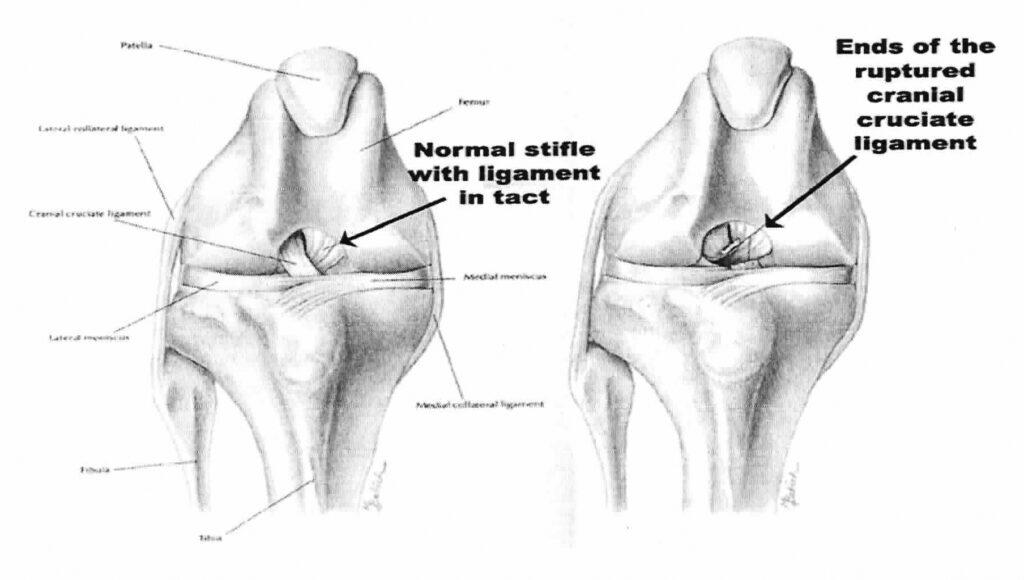
Choosing to do just conservative management, with no support or surgery. This seems to be gaining momentum and popularity, because obviously options can cost money. There are supportive things to do, such as keeping your dog in a kennel, leash walks outside, supplements, acupuncture, laser, prp, ect. While this option is better for the budget, it is not for the busy owner, or owners with small children and other pets. While it sounds great, reality is that there is a great chance your pup will continue to re-injure their knee. At some point, the door will open, and your dog will want to run.
Someone will forget, your dog looks like he is dong better at 3 months, and in he comes with the leg hiked all the way up to the groin. Sound familiar? This can be a tough cycle, and the bones in the knee are still able to move, causing pressure on the meniscus as well increasing your dog’s chance of arthritis down the road. So, can a knee heal with conservative management alone? Possibly, but there could be long term issues if you do not do passive range of motion, PT, and exercising along with CM alone.
This is by far my favorite option, from years of experience working with orthopedics. Using an orthotic Brace in conjunction with PROM and PT, as well as supplements and support. Now I am not talking about the cheap over the counter neoprene braces that have a spiderweb of straps connecting to the harness or back, those are no better than just letting the knee recover alone.
I am talking about a custom made premium orthotic brace, such as the Posh Dog Knee Brace. Posh Brace fully stabilizes the knee, allowing for range of motion and squatting, while also acting as a shock absorber for the meniscus. This is going to help give a smoother recovery, and allow that scar tissue to form without a lot of re-injuries. Thus, this is one of the safer options, and definitely still less than surgery.
Tightrope, lateral suture, or extracapsular repair. This is the cheapest of the surgical options, and should only be used on patients under 30-40lbs, as the suture has double the chance of failing in larger breed patients. This method usually is in the $2k-$3k ballpark range now, and is literally using fishing line/or suture to wrap around the knee joint to keep things in place. There are several ways this can and usually does fail. The crimps can come off, the suture can break, the suture can slip, ect.
These patients are immobile for months, and do get a lot of atrophy in the joint. This seems to be sore to recover from, and without a brace post op, your dog is going to need to be kenneled for weeks to months, to allow for scar tissue to properly form. This technique is similar to if you braced, however, without the full stabilization and support, and double the cost.
TPLO or TTA surgery. Both of these will be suggested by your vet or surgeon, usually first. They both entail cutting of the tibia bone, and re-alignment using a plate and screws. This is permanent, and there is no going back if something doesn’t go the way it was meant to. I always save this for my last option, as it is extremely invasive, expensive, and does not give a guarantee of working. Too many patients have had lifelong lameness due to choosing this option, and are not able to recover fully.
There are many weeks needed for kenneling, so the leg will atrophy. This also causes overcompensating on the good knee, which again increases the chances of another CCL tear in that leg. If surgery does go well, and you are able to do a full Physical Therapy Program post op with a professional, your dog may have a good outcome, but this is not without risk.
Please email me at poshintake1@gmail.com if you would like to ask more questions about Cranial Cruciate Ligament Repair, CCL/ACL tears in dogs, and what the best options are for your pup. You can also contact via our forms or visit our Facebook page.
How to exercise your dog using our brace. Hey guys, this is Nikki Lead Veterinary Technician with Posh Dog Knee Braces,we are going to talk about excerises for your dog. Today let’s talk about how to keep your injured dog active using our brace and how to exercise with it. As you know, after surgery there is several weeks that you would need to have your dog kenneled with no exercising, leading to atrophy of the muscles and overcompensating on the other joints. With our brace, patients are able to fully weight bear and start walks right away, decreasing the chances for overcompensating.
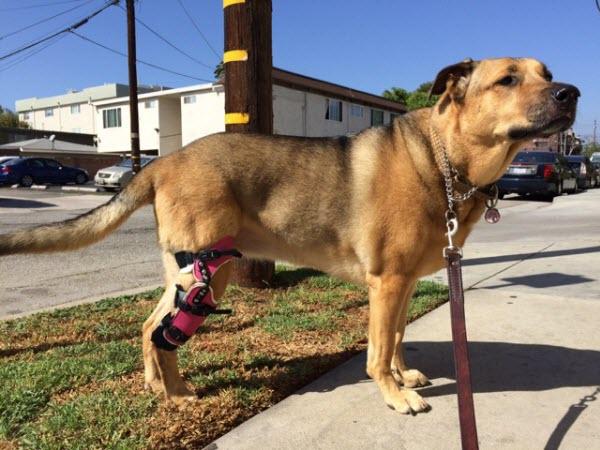
Just like us, we want to start out slowly, so as not to over-use those muscles that have been unused since the onset of the injury. I suggest starting out with no more than 2 fifteen minute walks per day for excerising, and gradually increasing the amount of walking each week by about 10-15 minutes, as the patient starts getting stronger. Each patient is different in the amount you are able to start walks, and there may be some initial soreness for the first 2 weeks. This will go away as we start gaining muscle back.
Once our patients are able to walk comfortably for at least 20-30 minutes, after a few weeks, we can start encouraging things like swimming, hills, beach walking, and curbwork for exercises. Swimming can be at a physical therapy clinic, swimming pool, or a beach. Just no jumping into the water and climbing yet. Short hills and small hikes are great tools to keep those muscles working out.
We do offer a 12 week physical therapy program with each of our patients, which includes stretches and different exercises, such as figure 8’s, curb work, walks, hydrotherapy, ect. It is important to keep up with passive range of motion as you work into more activities, to prevent soreness and stiffness in the muscles and joints. As we are developing scar tissue, we want to keep up with gentle movements in the knee. This is important to help the development of healthy scar tissues.
After a few months, gentle trots and increased activities will be ok, as long as the patient is supervised. As we start to approach the 6-9 month mark, there should be more and more stability to the joint, even without the brace on. As the knee begins to stabilize, we can do more and more activities. We still need to refrain from excessive running, jumping, twisting, or playing fetch until things are fully recovered. This is usually after about 12 months. Always ask our technicians if you have any questions on activities planned.
For more information about how to exercise your dog you can contact through our contact form or visit or Facebook Page.
Signs your dog is in pain. The idea is to be aware of your dog’s typical movement and react swiftly to any abnormalities.
Mental alarms may be triggered by your energetic dog limping or moving in an unnatural manner. A sprain, perhaps? A strained muscle perhaps a strained ligament or tendon what should you do in response to this?
You should first determine whether the aberration is a short-term or long-term symptom.
An acute injury is one that manifests abruptly, typically 24 to 48 hours after the initial trauma. Sprains, falls, accidents, and other impacts can cause acute injuries, which are characterized by sharp, immediate pain, soreness, redness, swelling, warm-to-the-touch skin, and inflammation.
In contrast, chronic injuries take longer to manifest, get better and worse, and result in persistent soreness or dull pain. Overuse, arthritis, and acute injuries that were never appropriately treated are the typical causes of chronic injuries.
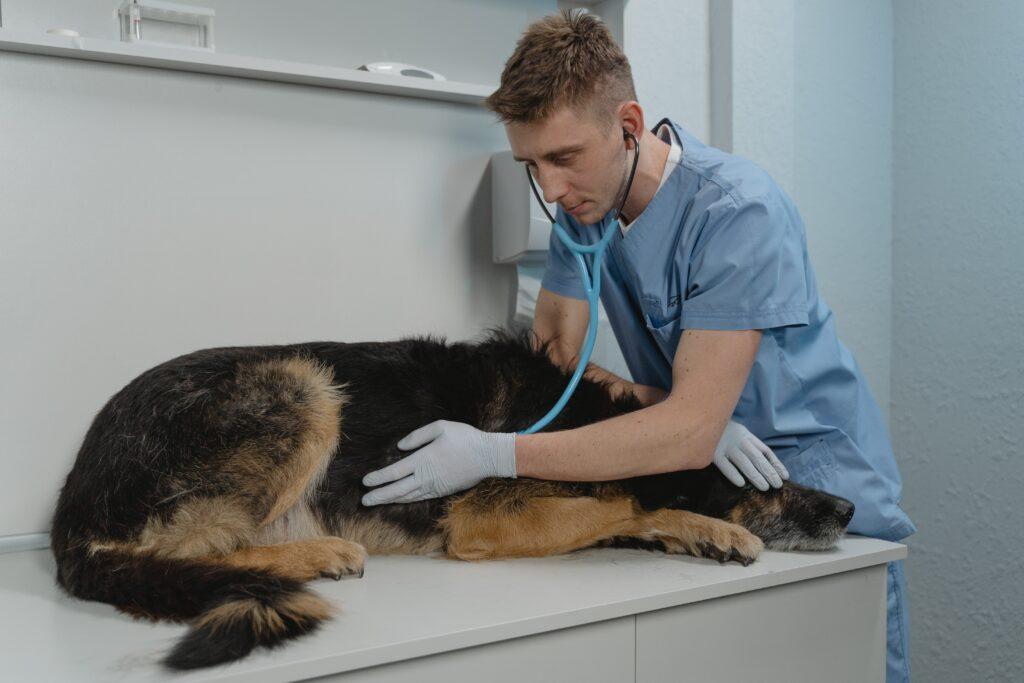
Sometimes a dog’s injury is visible because they are limping, howling in pain, or are unable to move. But paying attention to your dog’s movement and demeanor is time well spent because spotting mild indications can help prevent more serious issues. These are some examples of pain and stress signals:
The majority of canine injuries are chronic rather than acute. Chronic injuries are caused by overuse, excessive motion, and wear and tear. Every dog is susceptible to injuries, but some are more vulnerable than others, such as dogs that are overweight, weekend athletes, couch potatoes, elderly dogs, dogs with arthritis, dogs used in search and rescue, and canine athletics (such as dogs competing in fly ball, agility, freestyle, disc dog, hunting, field work, dock diving, obedience, weight pulling, dog sledding, and other active sports).
Rest is the number one suggestion for canine wounds. In particular, if the damage involves ligaments or tendons, which lack a blood supply that provides healing nutrients to the injury site, both visible injuries and subtle micro tears require time to heal. As soon as even little symptoms appear, it’s crucial to cease trekking, running, playing, or competing.
Check your dog’s nails, paw pads, and fur if he becomes abruptly lame, bleeds, or compulsively licks a paw, advises Dr. Davis. It’s common to see grass awns embedded in the skin between the toes. The pads are frequently affected by cuts, stingers, or foreign objects and a ripped nail can be painful.
If the injury is serious, take your dog right away to the vet; however, if it’s only minor or a visit to the clinic isn’t feasible, take your dog home and confine him to a quiet place. Write down any changes you observe, beginning with the day and hour you first noticed the issue and a description of what your dog was doing at the time. Your veterinarian or other therapist will be able to recognize and treat the injury with the aid of an accurate history of symptoms and treatments.
Range-of-motion exercises, such coaxing your dog with a food or toy into a turn to the right or left or raising and lowering his head, can help you record symptoms. Additionally, daily massage and tender touch reveal hints. When you pet or press your dog’s shoulder or hindquarters, does she turn away? Is there somewhere on your body that seems especially heated, hard, stiff, sensitive, or swollen? One of the quickest methods to find inflammation, muscle strains, and other discomforts is through touch.
Rest, ice, and massage are effective treatments for many minor and severe muscle, tendon, and ligament injuries. “Going outside on a leash to relieve itself counts as resting your pet; walks, treks, running, jumping, climbing stairs, or playing with other animals do not. Visit your veterinarian for a precise diagnosis if, after a few days, your pet has not improved, does not get better, or continues to display the same symptoms.
For severe injuries, cold is advised since it lessens discomfort and swelling. Dogs who are hurt instinctively look for places to stand or lie down, such as puddles, ponds, streams, and snow banks.
It is untrue for a bag of frozen peas to work as an efficient ice pack. The peas don’t remain cold for long enough to be useful. Pet supply shops have cold therapy items for animals, while businesses that sell medical supplies also sell cold packs for sports injuries. The finest cold packs have a gel inside that doesn’t harden when frozen, allowing you to shape them to a dog’s body.
Make your own cold packs by combining two cups of water, one and a half cups of isopropyl (rubbing) alcohol, and two tablespoons of salt in a self-sealing plastic bag. Double-bag the bag to ensure a tight closure.
Any open ice pack should be covered with a towel before application, removed after 10 to 15 minutes, and left off for at least two hours before reapplying because cold limits circulation and ice left on for too long might result in difficulties. Never use cold treatments right before working out, practicing, or competing.
Put two cups of uncooked rice in a sock, tie the top, and microwave for one minute to create your own warm pack. It will continue to be warm for 20 minutes. For additional relaxation, add a sprig of lavender or a drop of essential oil. The sock can be utilized repeatedly. If you don’t have a microwave, put the raw rice in a cookie sheet and preheat the oven to 150°F for 5 to 7 minutes.
Then, pour the warm rice into a sock or pouch, make sure it’s a safe temperature before applying, and check to make sure it’s still warm enough. As an alternative, soak a towel in warm water, wring it out thoroughly, and apply to the affected region. As required, reheat.
Whenever utilizing a warm pack, never leave a dog alone. To ensure the optimum temperature, always place a towel between the pack and your skin.
The fundamentals of massage are simple to master, and the majority of dogs like to be touched, stretched, and caressed. Restoring range of motion, calming the patient, and repairing injured tissue are all benefits of massage therapy. Hire a professional dog massage therapist, or study the foundations in books or on videos.
Chiropractic adjustments restore proper joint and vertebral alignment to alleviate pain, lessen muscular spasms, enhance coordination, and improve general health.
Musculoskeletal issues like arthritis, disc diseases, stiffness, and lameness can be improved or treated by acupuncture. It’s near relative, acupressure, involves pressing on acupressure points without using needles. Gent finger pressure or small, counterclockwise or clockwise-moving circles can be used to accomplish this.
Veterinarians and canine rehabilitation therapists provide a range of treatments for wounds, including hydrotherapy, shock wave therapy, therapeutic exercise, therapeutic ultrasound, therapeutic laser, PEMF therapy, cryo therapy, orthotics and braces, electrical stimulation, herbal remedies, and energy healing modalities like Reiki.
Without first visiting your veterinarian, avoid giving your dog any over-the-counter medications. Numerous human drugs “may not be taken by your pet” or “may produce undesirable reactions with your dog’s other meds.”
Even if your dog appears to be in good health and reacts well to pain medication, follow your vet’s advice to rest and only engage in light exercise while the injury heals.
Helping your dog avoid damage by taking precautions takes time and effort, but it’s time well spent.
Preventing obesity is a crucial objective. Carrying too much weight puts too much strain on the muscles, tendons, and ligaments. “Obesity is also an inflammatory condition. Degenerative joint disease and a variety of other problems throughout the body can be brought on by chronic inflammation. Reduce the amount of treats your overweight dog receives during training and forbid family members from giving her more. It takes a village to lose weight successfully in dogs.
Similar to humans, pets benefit from having a strong core to lessen stress on the spine and limbs. Regular conditioning should be a lifelong objective for your dog. Your dog need not be an athlete to train like one. There are several online athletic and conditioning communities, and your neighborhood kennel club might know of them.
Avoiding repeatedly doing the same movements is another protective measure. Tennis ball throwing may be your dog’s favorite exercise, but repetitive ball throwing can lead to injuries, so mix it up with other hobbies.
Keep toenails short because overgrown toenails alter the biomechanics of the toes, which affects the alignment and mobility of the legs and spine.
Be practical while planning your dog’s schedule. Sprains and strains are brought on by abruptly changing from couch potato to canine athlete. For ambitious games of fetch, trail runs, and other “too much fun” occasions, inactive dogs require time and progressively increasing activity. And if your dog is hurt, have patience. Keep in mind that one of your dogs strongest heals is time.
If your dog is in need of a knee brace or elbow brace due to injury you can order your brace today via our shopping page, if you have any further questions about what you should do you can contact us via our contact form, or visit our Facebook page or Group page for more information.
You must socialize your dog with people if you want him to be hospitable to both friends and family. Here are some pointers for socializing your dog with others.
Congratulations! You’ve just added a new dog or puppy to your home, and both he and you are adjusting to life together rapidly. It’s possible that you didn’t consider how much or even how to socialize your new dog or puppy when you were adopting them. You must introduce your dog to new people if you want him to be hospitable to both friends and relatives.
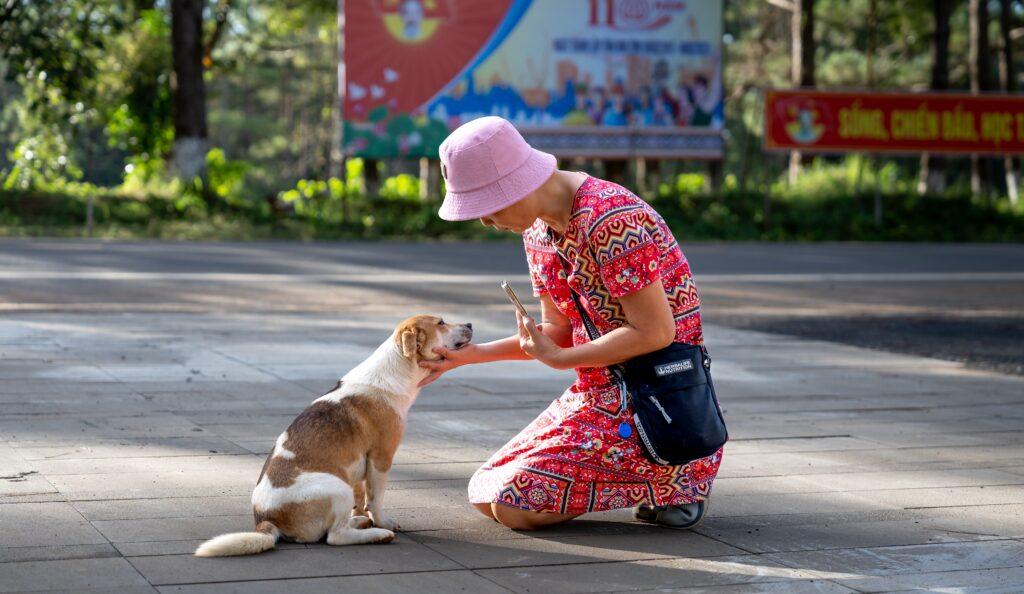
A major deal—for everyone—is introducing your significant other to the family. It’s quite different when you socialize your dog to your significant other. Regardless of how hostile your family may be against a new spouse, at least they won’t bite, right?
It’s been “the two of you” when you share your life with your dog prior to welcoming a new person. Your dog will be used to being the “top dog,” so when you bring home a significant other, he can feel displaced and not be happy about it.
You can do the following things to make the introductions go more smoothly:
There’s a good possibility you won’t have time to set up these “neutral ground” conversations if you’re throwing a party or hosting houseguests. Your visitors should be aware that they are entering your dog’s domain and that it can take the dog some time to get used to them. These folks are strangers to your dog, so you should introduce them to him the same way you would any stranger. These first socialize interaction must be watched over and conducted as calmly as possible.
You can introduce your dog to home guests in the following ways:
You must maintain command of the circumstance. Keep your dog on a leash if you know he will become aggressive against outsiders who invade his domain or if you are unsure of his reaction. Allow visitors to enter, and once they are inside, let your dog start the introduction.
Allow your dog to greet your guests while keeping him on a short leash. Allow your guests to give him a tiny present if you are confident that he will accept it well. This serves to further solidify the association between stranger and treatment. Give your dog a treat when he behaves well and is calm.
Use the commands “sit,” “down,” or “stay” if your dog has been taught them when guests arrive at your home.
You should greet visitors first so that your dog can observe your interactions. Your dog will detect the pleasant interaction, will notice that you’re relaxed, and that might encourage him to relax, whether you shake their hands or embrace them.
Inform your visitors if your dog jumps. Inform your visitors that if your dog jumps on them, they should turn their backs to the dog and place their arms across their chests. Ask them to refrain from addressing your dog by name or even from saying “down.” The fact that they are turning away will deter the dog from jumping because he is not being petted and is being ignored.
You could choose to let your dog off his leash once the visitors have entered your home and he seems at ease with them being there. Keep an eye on his level of tension and provide your visitors with advice on how to speak with him.
Extreme caution must be used whenever children are present, whether you are bringing a new baby home, hosting visitors with children, or running into kids on the street.
Children squeal, run around, and sometimes yank the dog’s fur or unintentionally step on its paws or tail. A youngster running around may in some cases and with some breeds trigger the dog’s predatory instinct, which can have catastrophic results. Avoid interacting with dogs you don’t know too much. If you have children and are adopting a dog for your family, do your research to make sure the dog is “kid friendly.”
Here are some pointers to socialize your dog to kids in a secure way:
You, the pet parent, must pay attention to your dog and his body language if you want to foster positive connections between your dog or puppy and visitors to your home, people you meet on the street, or if you’re bringing home a new, little human. When he feels at ease, move cautiously. When your dog shows signs of anxiety, you should go more slowly or remove him from the environment and try again later.
Dogs strive to win over their owners. They might take some time to warm up to a stranger, but with time and encouragement, your dog and the people in your life will develop a close friendship that will last a lifetime.
If you are interested in any of our products please check out our store page and if you would like to join our Facebook page click here.
It’s time to focus once more on the chocolate in your home with Valentine’s Day quickly approaching. After all, it’s customary to receive chocolate during this time of year that you would not often have on hand, and this can easily turn into an alluring treat for your family’s pets.
It’s crucial to keep in mind, though, how poisonous chocolate may be for dogs. Although chocolate toxicity in dogs or cats may not always result in death, it can be extremely harmful and may also result in long-term health issues.
To learn more about what to watch out for this Valentine’s Day and whenever you have chocolate in your house, read the information below.
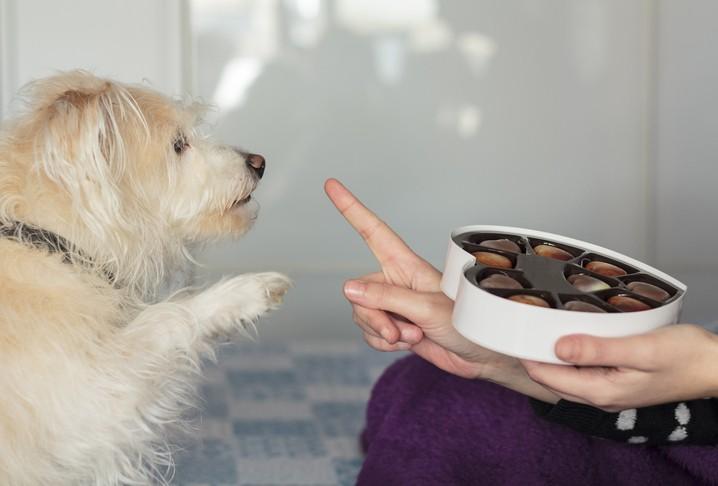
Chocolate is toxic to dogs for two reasons:
The first of these is that chocolate contains caffeine. While certain varieties of chocolate have more caffeine than others, all varieties of chocolate do. Caffeine can make your dog’s heart beat too quickly, which could have major negative health effects. The same logic applies to the argument against allowing dogs to consume coffee.
Theobromine is another component of chocolate that can be poisonous to dogs. This substance can act as a diuretic and behaves similarly to caffeine. Your dog may quickly get dehydrated as a result of this, which could cause other issues.
It’s crucial to keep in mind that a chocolate’s toxicity increases with how bitter it tastes. This indicates that white chocolate is less likely to be harmful than dark baking chocolate, which is particularly poisonous. Do not give your dog any chocolate, even if you believe it is not too bitter, as all varieties of chocolate can be toxic and hazardous to dogs and other pets.
Now that you are aware of the reasons why chocolate is harmful to dogs, it is critical to know how to spot the signs of chocolate poisoning in your pet.
Intoxication symptoms in dogs from chocolate include:
The two issues listed above are the first indications that dogs are poisonous to chocolate. In minor situations, dogs may merely vomit or have a few episodes of diarrhea before feeling better.
However, in extreme circumstances, these symptoms may worsen and eventually lead to the other conditions on the list below.
Dogs who have consumed too much theobromine or caffeine may exhibit increased thirst and urine. This is because theobromine and caffeine are both diuretics.
Particularly caffeine may make dogs act agitatedly. Even without the dog consuming much of it, darker chocolates with higher caffeine concentrations may cause this symptom.
A worrisome sign that might cause cardiac arrest is an increased heart rate, especially in older or sicker dogs. It may be advised to take your pet to the emergency vet for monitoring and/or treatment since it can be challenging to monitor your pet’s heart rate at home.
One of the worst signs of dog’s excessive chocolate poisoning is seizures. This may only happen if a dog consumes a significant amount of chocolate, but it occasionally indicates that the toxicity will become fatal without veterinary care.
If your dog exhibits this symptom after consuming chocolate, take him to the clinic right away.
Depending on the signs your dog exhibits after consuming chocolate, you may need to take different actions.
If you are aware that your pet has had chocolate, call the emergency veterinarian as soon as possible. Depending on the type of chocolate consumed and the size of your pet, clinical symptoms and issues can differ greatly. Your pet may occasionally be made to vomit the chocolate up by the vet in an effort to prevent or decrease the possibility of developing clinical symptoms.
Do not wait for symptoms to appear before contacting your veterinarian; once symptoms appear, treatment becomes much more challenging.
Please take your pet to the emergency vet if he exhibits any of the signs on this list and you are certain that he has consumed chocolate. Dehydration can occur quickly as a result of excessive thirst and urine, which can be very dangerous for dogs.
The more quickly you react to your dog’s alarming symptoms, the more probable it is that your dog will be able to fully recover from the situation.
There are numerous ways to protect your dog at home and avoid chocolate toxicity:
If you keep chocolate of any kind in your home, you should always be aware of how you’re storing it and how probable it is that you’re pet will try to get to it. Whether you have brownies, cookies, milk chocolate bars, or cocoa powder in your kitchen or pantry, they should always be kept in a secure location that your pet can’t access.
Avoid leaving chocolate goodies or wrappers lying around by keeping cabinets and pantry doors closed whenever you can.
Additionally, it’s crucial to teach your pet the “leave it” command to stop them from grabbing objects—either food or inedible—that they shouldn’t. Early training of your dog in good manners and obedience can prevent a lot of hassle later on for both you and them.
Children are renowned for giving pets gifts. Get kids in the habit of putting things away in their right places and teach them not to offer your dog any chocolate or other goodies.
Make sure kids develop the habit of immediately closing the fridge, cupboards, and drawers after usage.
Cocoa shell mulch is a rare but potentially harmful source of chocolate poisoning in dogs. The mulch, which is frequently used as a top covering for plants, can entice dogs with its sweet perfume, causing them to consume some of the mulch, which can lead to disease.
Cocoa shell mulch should never be used for landscaping.
With the use of this knowledge, you ought to be able to protect your dogs at Valentine’s Day and any other time of the year when there is chocolate present. Keep any domestic pets under close observation and store chocolate securely out of their reach. You can avoid this potentially deadly issue altogether if you take this action. Call an emergency veterinarian straight once if you know or suspect that your dog has consumed chocolate.
If you would like to learn more about our tips and tricks you can visit our blog page for you can check out our Facebook Page. If you are interested in purchasing one of our Posh Dog Knee Brace you can click our shop page.
Give your dog a designated digging area and restrict him unsupervised access to the areas where you don’t want holes to be dug if you want to completely stop undesired digging.
Digging is among many dogs’ favorite pastimes when it comes to their natural behavior. Digging is frequently discouraged for dogs who live with people, which is unfortunate.
There are many reasons why dogs dig holes in the ground:
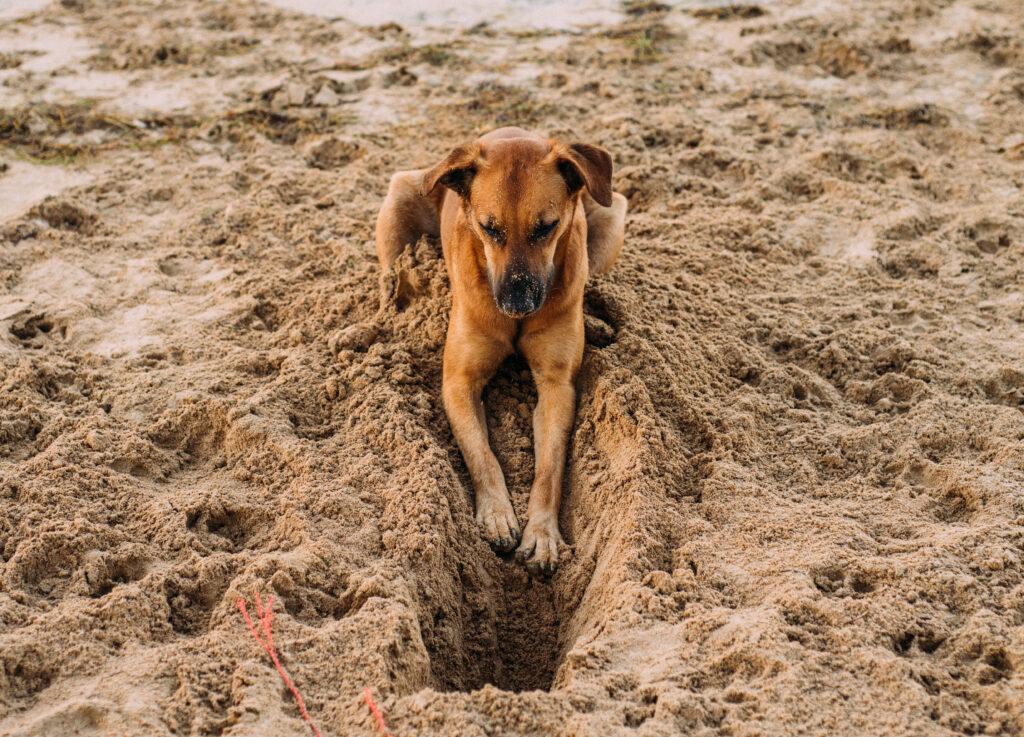
Avoiding digging entirely is the best solution. Until you’re sure your doggy can amuse himself without digging, don’t leave him outside unattended. Look around your yard to find the best sites for digging, such as gopher mounds, regions with loose ground, or damp areas that are conducive to digging. Of course, some dogs may dig wherever they feel like it, but removing the temptation makes it simpler to focus your dog’s attention on better habits.
If you must leave your digging doggy alone in the yard, use management to help stop practice sessions for the undesirable activity. If your dog likes to dig, you might want to consider a secure enclosure like a dog run or utilize a reliable exercise pen that is set up to prevent access to certain places. Just while she is learning, though; it won’t last forever!
It’s a good idea to assess your dog’s overall enrichment honestly. Does your dog go for daily walks outside of the house and/or yard? Is the path always the same? Do you vary your routine by doing some exercise while you walk? Does your dog ever accompany you on errands to new (dog-friendly) locations if he is comfortable in public? Dogs frequently dig when they’re bored. Ask him honestly what else he has planned for the week to see if you can shake things up a bit.
If your dog has a history of digging up stuff, try some of the following:
Create a digging pit by filling a plastic wading pool or a child’s sandbox with sand or dirt. Compared to dirt, sand leaves less of a mess. bury the toys your dog enjoys most. Show him the reward pit and assist him in finding it with excitement. Don’t forget to replace the toys buried within the pit and continue assisting him in finding the treasures. The “hides” may get smaller and more difficult to spot as he improves.
Digging holes at random? Try replacing the majority of the dirt in the hole, adding some of your dog’s waste on top, then covering it with the remaining earth. Digging for fun and discovering waste can be very unpleasant for some dogs. As your dog tries out new digging techniques, you’ll probably need to repeat this process a few times, but for many dogs, the regular experience of uncovering waste will cause them to reevaluate their backyard behavior, especially when combined with your efforts to give them more enjoyable activities.
You find it difficult to poop in your dog’s favorite holes. Use the same method, except instead of excrement, use a piece of chicken wire that has been cut to fit the hole’s surface area.
We advise creating a trough along the fence for fence diggers, then filling it with massive, upright stone pavers. Another option is to bury an 18-inch-tall chicken wire trip about a foot beneath the bottom of a wooden fence.
Most crucial, keep in mind that behavior doesn’t alter suddenly. It may take up to a few months of consistency before you notice a noticeable difference in your dog’s digging, so you’ll need to be consistent in your efforts to lessen it using a combination of teaching and management. Avoid digging yourself a deeper hole by giving up too soon!
If you are interested in purchasing a Dog Knee Brace from us please check out our store and if you are interested in join our Facebook Page click here.
When dogs wag their tails and strike objects with them repeatedly, they commonly suffer from this dog tail injury.
Nobody is thrilled if your dog develops what is known as “happy tail syndrome,” though. Dog tail injuries are common, especially in cheerful dogs, but they are challenging to treat.
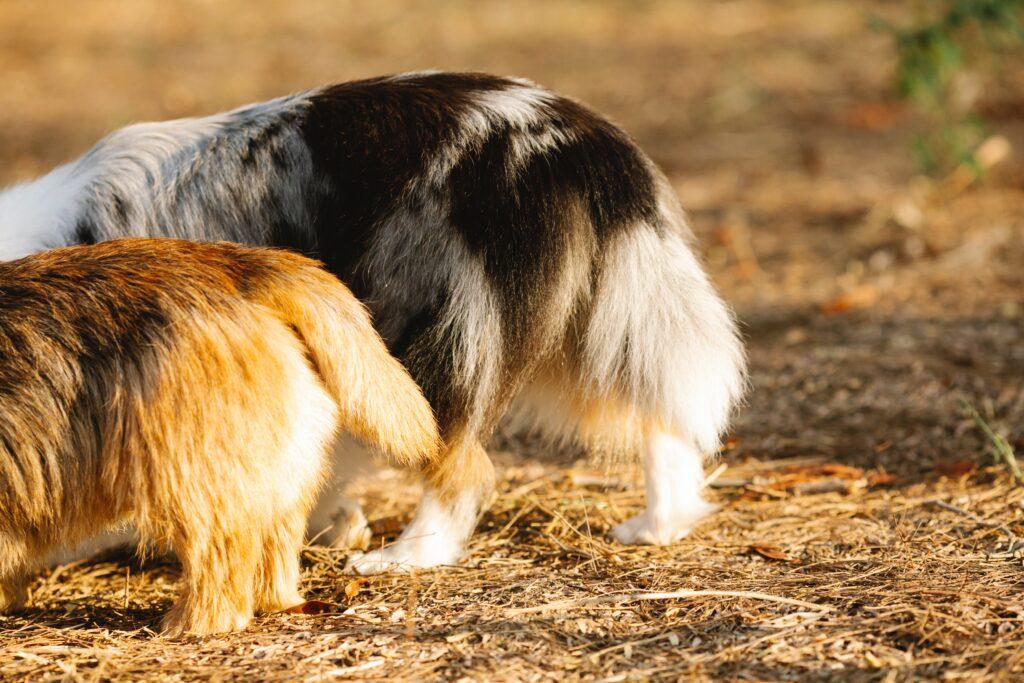
Dogs with long, slender tails that wag vigorously and traumatize the tip of their tail when it strikes a hard surface are said to have “happy tail syndrome.” Every time they bang the tail, they cause more harm to the skin there. It also bleeds. A lot. While the dog is at rest, it might create a clot or scab, but as soon as the dog is up and wagging—or strikes something—the scab falls off, the wound cracks open, and the bleeding resumes. It’s extremely frustrating.
Now what? Finding a means to shield the tail tip from the recurrent damage is a key component of happy tail syndrome treatment. You might be able to encourage it to heal if you can.
The key is creativity. These wild happy tails are difficult to maintain bandaged, and dogs aren’t always ready to do so. People have experimented with a wide variety of items, including pool noodles, toilet paper rolls, chopped water bottles, foam pipe insulating tubes, and syringe casings from your veterinarian. There are commercial kits that use cushioning devices that fit into a bandage on the tail to protect the dog’s tail.
Here are a few pointers: Try to keep it as light as you can. The likelihood that the bandage may go winging off with the wagging increases with its weight. I apply white first-aid tape that extends several inches down the tail before being incorporated into the bandage covering the wound. The goal is to increase the bandage’s “grab” so that it will adhere better. Make sure it’s not too tight! Keep the protective tube’s end open to allow air to flow to the tail tip.
Sadly, even if you are successful in helping your dog’s tail recover, it will probably reoccur again. You could try padding the walls, corners, and other surfaces where he constantly bumping his tail, but that’s difficult to accomplish and not very appealing when visitors are over. Only where there is room can you try to interact with your dog, but that is also impractical.
In Conclusion! Talk to your veterinarian about having the tail amputated if you can’t get it to mend or if you’re sick of returning home to a bloody scene straight out of a horror movie. If you go short enough, the surgery will take care of the traumatized tip and ensure that it never happens again. These dogs occasionally develop adorable tiny bob tails. You won’t get any blood splatter, and they are still free to wag as fiercely as they want.
Let Your Dog Recover With Our Custom Dog Knee Brace!
We’ve Helped Thousands Of Dogs, Now We Want To Help Yours…
The Posh Dog Knee Brace is a 100% custom Dog knee brace, hand made only for your Dog. We make our custom brace with no casting. Our state-of-the-art brace for Dogs is very durable, waterproof, sand proof, and easily adjustable by customers. Our Veterinary Technicians provide personal live video supervision of measuring, and fitting of your Dog ACL brace in the comfort of your own home.
If your dog is in need of a Posh Dog Knee Brace you can order from our Shop page if you would like to join our Facebook Group please click here. Thank you for reading this article for more information you can contact us anytime.
One of the first things you’ll do to help your dog adjust to his new home is potty training, and there are several different approaches you can take. To ensure success for both you and your dog, try these seven tips.
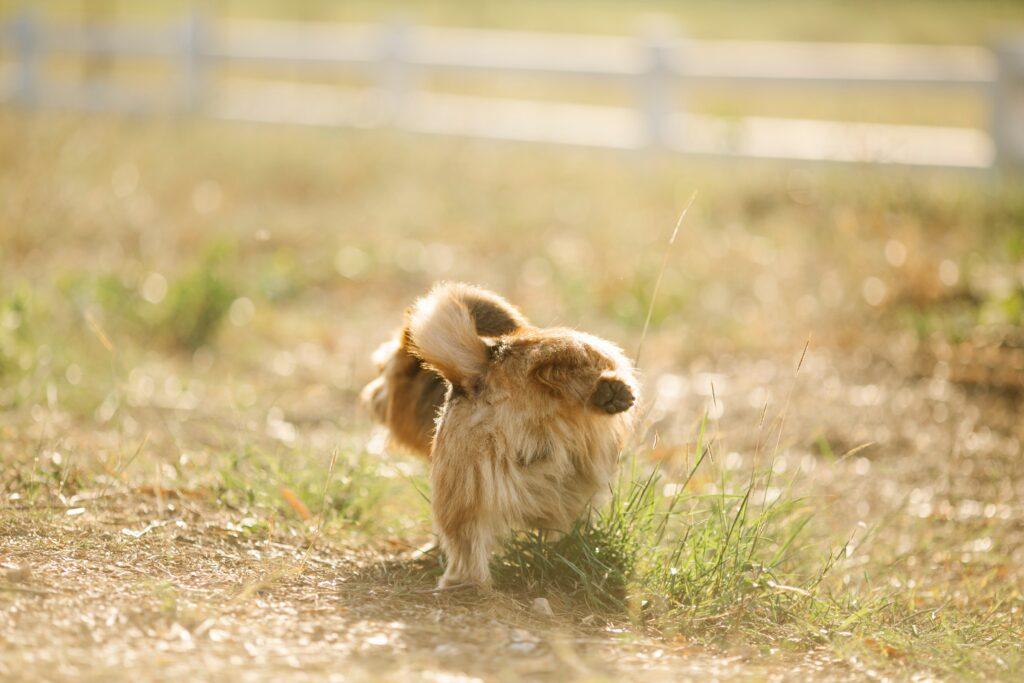
Decide where you want your new friend to “go” outside the house before you start potty training. Do you have a yard? Point them in the direction of a place that is easy to reach from the door. Dogs living in apartments should also be able to recognize open, accessible natural terrain that isn’t blocked by people or vehicles.
Once you’ve chosen the location you’ll take your dog during this potty training phase, be sure to take them there each time they need to go outdoors. Consistency is key while teaching a puppy to use the bathroom since dogs can scent their territory.
Although your new puppy may not be able to communicate with you in your native tongue, they will nonetheless make an effort to let you know when they need to go potty. Fortunately, there are several indicators you can watch for. As soon as you see them, take your dog outdoors to their designated potty training area:
When your dog exhibits the final symptom on the list, it might already be too late. So that they are aware that their customary space is up for grabs before they go in the wrong location, be prepared to open the door nonetheless.
Plan beforehand so you can swiftly take your dog outside if you see any of these symptoms. Keep a leash directly by the door so you can quickly lead the pet outside. Keep in mind to direct your dog to the same location each time they need to urinate. Once they are aware of the location of their designated bathroom, they will go there on their own.
Maintain a routine for all meal and snack times while potty training a dog. This is beneficial in two ways: The first benefit of planned meals is that they will teach your dog when to expect meals throughout the day. Second, if you feed your dog at regular intervals, you may follow up and take them to their designated potty training area in the knowledge that they’ll be prepared to relieve themselves shortly after they finish eating.
It’s likely that your dog will urinate frequently if they consume a lot of water. During the potty training stage, take your puppy outside soon after drinking so that they are in the appropriate location at the appropriate time.
Take your dog outside as soon as you wake up, after each feeding, and whenever you notice signs that they might need to relieve themselves. A lot of dogs have a bowel movement 30 minutes after eating. Until you have a better understanding of how frequently your dog does potty, take them outside every hour to prevent accidents. Based on their age, the following are some rough guidelines for how long puppies can “hold it”:
While small breeds with smaller bladders may require more frequent bathroom breaks, big breeds have a stronger ability to wait. Most dogs can wait seven hours or more by the time they are seven months old. They ought to know how to alert you when they need to go outside by that age. Always take your dog out before you go to bed to prevent 3 a.m. wake-up calls or morning surprises.
Everyone enjoys being told when they are doing a good job, and your dog will benefit greatly from this encouragement. It doesn’t matter if you give them treats or just pat them while saying “excellent work.” Just make sure they understand how much you value their attempts to conduct themselves properly. To teach the command “go to the bathroom,” think about identifying the deed. For instance, you might tell your dog to “take a break” before engaging in play.
Puppies prefer not to go potty close to where they eat or sleep. By crate training your dog, you can use it to reinforce housetraining. A puppy can easily relieve themselves in one part of a bathroom or laundry room while sleeping and playing in the remaining areas. If you need to use the phone or check your email while keeping an eye on your young dog, keep them in their kennel.
They will let you know if they need to use the restroom because they won’t want to mess up this place. Put them back in the kennel when you reach home if they play unproductively while outside. A crucial lesson that every puppy should learn is that if they mess up the kennel, they will have to temporarily live with it.
Accidents happen frequently during house training. When your dog needs to go outdoors to the designated pee place, quietly direct them there immediately away. Punishing a puppy could exacerbate the problem and lead to more accidents at home.
Clear the space right away. Ammonia should be avoided since it smells a lot like pee. While disinfecting, bleach cannot get rid of odors. Your dog will probably go potty there again if they smell feces in your house. Use an enzymatic cleanser or odor neutralizer made especially for pet excrement to clean the stained area. While it dries, keep your dog away from the area.
When encountering new people or animals, puppies may squat out of excitement or respect. Before meet-and-greets, give them bathroom breaks to prevent a mess. Take frequent bathroom breaks while traveling as well. If you want to board your dog while you are away, make sure to provide the facility detailed instructions to ensure consistency. Restart house training if you move to a new residence. Limit them to one area of the house, show them where the new toilet is, and give them praise when they behave well.
Many dogs don’t like going outside in the rain or don’t like going potty in the snow. A puppy may be terrified of the cold and rain for the first time, but even older dogs prefer to potty in comfort. To provide some weather protection, keep an umbrella close at hand.
Create a trail to your dog’s chosen bathroom location so they can go without exposing their tails to the bitterly cold ground. Increase their reward for using the restroom in poor weather by giving them twice as many treats. This will lessen the likelihood of unpleasant surprises beneath the piano bench. Even the best-trained dogs are more likely to have accidents in the house if they are overly anxious, stressed out, or afraid. Consult your veterinarian to rule out any health issues whenever your house-trained dog has a number of accidents.
Not all dogs pick things up at the same rate. By eight or ten weeks old, some puppies are experts at house training. Other puppies, such those of toy breeds, may take longer to grasp your expectations and may not show consistency until they are a few months old. In most circumstances, all dogs can learn to relieve themselves in a permitted area with your patience, encouragement, and persistence.
If you are interested in our Posh Dog Knee Brace you can purchase one through our Store or if you have any questions you can reach us on our contact page. If you would like to learn more about us you can also check out our Facebook Page and community.
After they poop, dogs will occasionally use their hind feet to scratch or kick the ground. Give them freedom to; we don’t know why they do it, but it seems they like it.
It’s a routine ritual. A dog urinates or defecates, then scuffs dirt, grass, or gravel into the air in what appears to be an accomplishment or at the very least, a mark of celebration. What motivates canines to behave in this way?
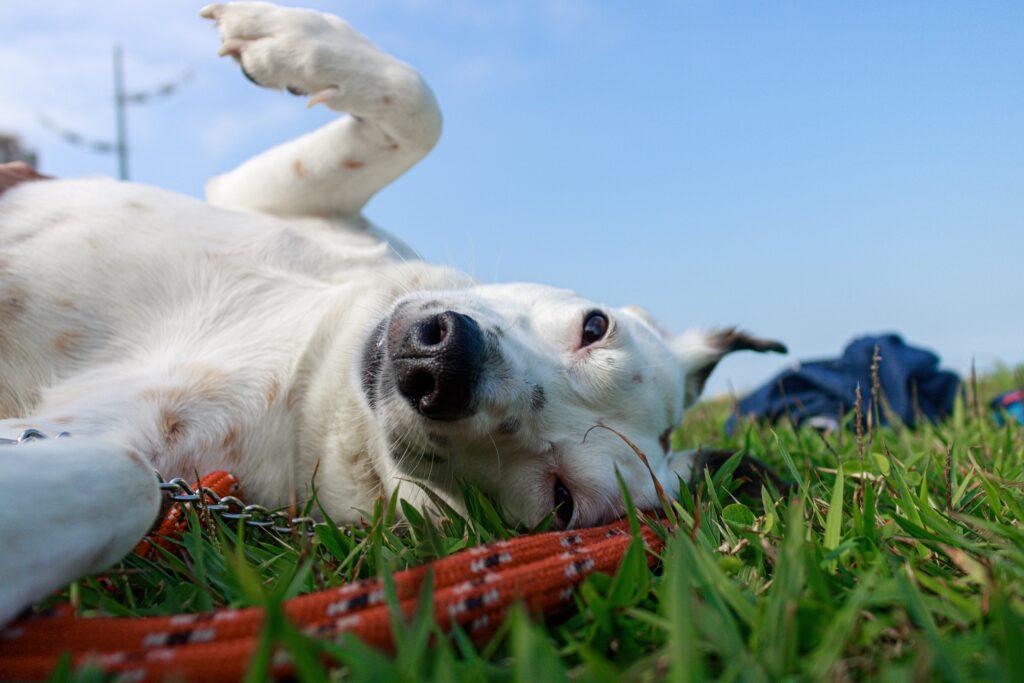
According to certain research, males engage in this behavior substantially more frequently than females when other dogs are present.
Dogs may do this for a variety of reasons, depending on the people present and what they are attempting to convey through visual, olfactory, and aural cues. He claims that dogs who exhibit this behavior appreciate it and that it appears to have significance for them.
If your dog’s grass kicking harms your yard or causes other issues, find entertaining diversionary strategies and encourage other habits until this one is under control. If not, wait until your dog has finished speaking before moving on with your walk. This will allow them to finish their message.
The Posh Dog Knee Brace is a 100% custom Dog knee brace, hand made only for your Dog. We make our custom brace with no casting. Our state-of-the-art brace for Dogs is very durable, waterproof, sand proof, and easily adjustable by customers.
If you are interested in a Posh Dog Knee Brace you can contact us on our contact page or you can order from our store. If you would like to check out our community page on Facebook click here.
Here is the best advice and tips on how to bathe a dog, from selecting the right shampoo to washing a dog’s head.
A little shampoo, some water…. How challenging can bathing a dog be? Occasionally, harder than you’d expect. Regular dog baths are an essential element of pet care, regardless of whether your dog enjoys them or flees when you say “B-A-T-H.”
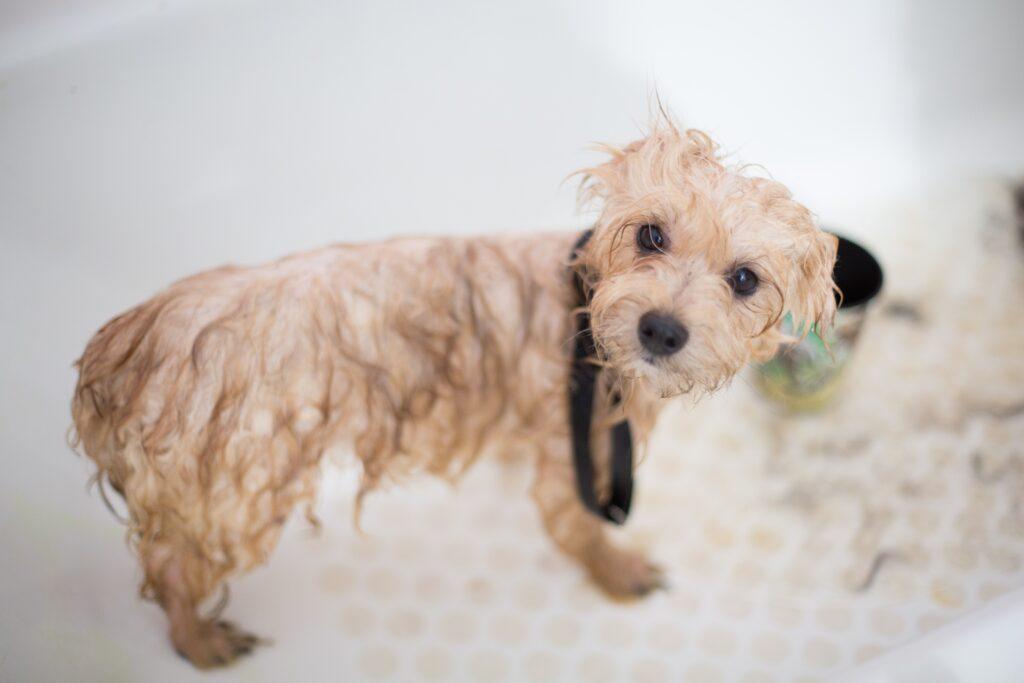
You usually don’t need to bathe your dog more frequently than once a month, unless your pet had spent the afternoon playing about in mud puddles. Breed-specific factors come into play here; for example, longer-coated dogs may need more regular bathing or even visits to a groomer. Consult a groomer or your veterinarian if you’re unsure how frequently to soap up your dog. (IMPORTANT TIP) Giving a bath once a month is crucial, though.
Dogs develop a completely new layer of skin cells every 30 days or so. “The aged cells therefore slough off. Dander and other similar products are produced in this way. Therefore, regular grooming or bathing helps to reduce that dander.
Your initial choice will probably be where you will bathe your dog. Your decision will probably be influenced by the size of your dog. A little dog might fit in the kitchen sink for a bath, but a large dog will need more room. Some pet owners like dog-specific bathtubs, whether they are standalone units, built-in units, or located in a DIY dog bath facility. Fur and filth can be prevented from blocking your family bathtub by using a designated dog bath space. But it’s also acceptable if you want to bathe your dog in the household bathtub. Simply pick a location where you can bring your dog in and out of the cleaning area without risk.
Then, make sure you have all your supplies and tools close at hand before turning on the faucet. You don’t want to have to go around your house chasing a wet dog in search of conditioner. Of course, you’ll need towels, shampoo, and conditioner on your supplies list. Just in case, you might also want an eye wash and a non-slip bath mat.
You need to start with the correct supplies if you want to give your dog a thorough bath. Make careful to use shampoo designed exclusively for pets. Dogs’ skin has a different pH than people’s. Therefore, they are more alkaline. It can irritate someone’s skin if they use shampoo designed for people.
Puppy-specific shampoo may be a good idea when bathing a puppy. Puppy shampoo’s pH is similar to that of a dog’s eyes, so if any goes in there, it won’t bother the eyes as much.
Ask a groomer what products they use if you’re unclear of the ones to choose for your particular dog. Use a gentle shampoo, a shampoo made to treat the ailment your dog is having, such as itchy skin, may be the best option.
The crucial next step is applying a conditioner to your dog’s coat after shampooing. When doing your own grooming at home, you should always follow up with a conditioner because using shampoo strips the skin and hair of many of their natural oils. Therefore, your conditioner both hydrates the epidermis and seals up every cell on the exterior of the hair shaft itself. “Basically, using the conditioner is rehydrating.”
The real fun starts once you have selected the ideal location and ready-to-use supplies. Here is our bathing process:
One of the trickiest steps in giving your dog a bath is washing his head. Avoid getting water or soap in your dog’s eyes, nose, or other delicate body parts. Delaying this step until after the bath and suggests wiping your pet’s face with a washcloth.
Your dog’s head and face should be gently washed with the washcloth dipped in soapy water. After that, rinse with clear water using a fresh washcloth. Make sure all of the soap is removed from those locations.
You should try to avoid the eye area as much as possible when applying shampoo, even if the shampoo is intended to be gentler on puppies’ eyes. Have an eye wash on hand to use if shampoo does get in your dog’s eyes. Moistening eye goobers on your dog before gently removing them with a toothbrush.
Even though some dog breeds adore the water (golden retrievers come to mind), many dogs tremble at the mere sound of the bath tap going on. Give your dog lots of praise while bathing him to help combat this. Treats are preferable to praise. When your dog next sees you gathering the dog shampoo, make sure he associates it with good things.
Having a companion hold the dog while you give him a wash is also beneficial. Additionally, if at all feasible, begin bathing your dog as a puppy to get him accustomed to the experience.
First, try your best to towel-dry your dog. Then, put a human hairdryer to a medium or cool setting or use a hairdryer designed specifically for dogs. When your dog is drying off, start brushing him. As long as your dog doesn’t shiver excessively or get the chills, you might also let him air dry.
“Every 10 or 15 minutes run a brush through them as they’re drying and that’ll help avoid mats or help separate mats if they have them,” if you’re air-drying your dog.
Your dog will look and smell better after a bath. Additionally, you will feel good knowing that you did something good for your dog’s wellbeing and appearance.
If you have any questions you can reach out to us through our contact form or you can check us out on Facebook.
Hey guys, today let’s discuss hips and joints, and why it is so important to do your research if adopting a dog from a “breeder”. Unfortunately, just because a puppy has a hefty price tag, does not mean they have had proper health screening. Today we will explain why this simple step can save you literally thousands of dollars, and a lot of heartbreak. So, you see an add for a cute little fluffy golden retriever puppy (maybe a doodle mix), not papered, and for a great price. Good deal, right? You aren’t planning to breed, so in your mind it is meant to be, and the price is half what you have seen other goldens/doodles go for.
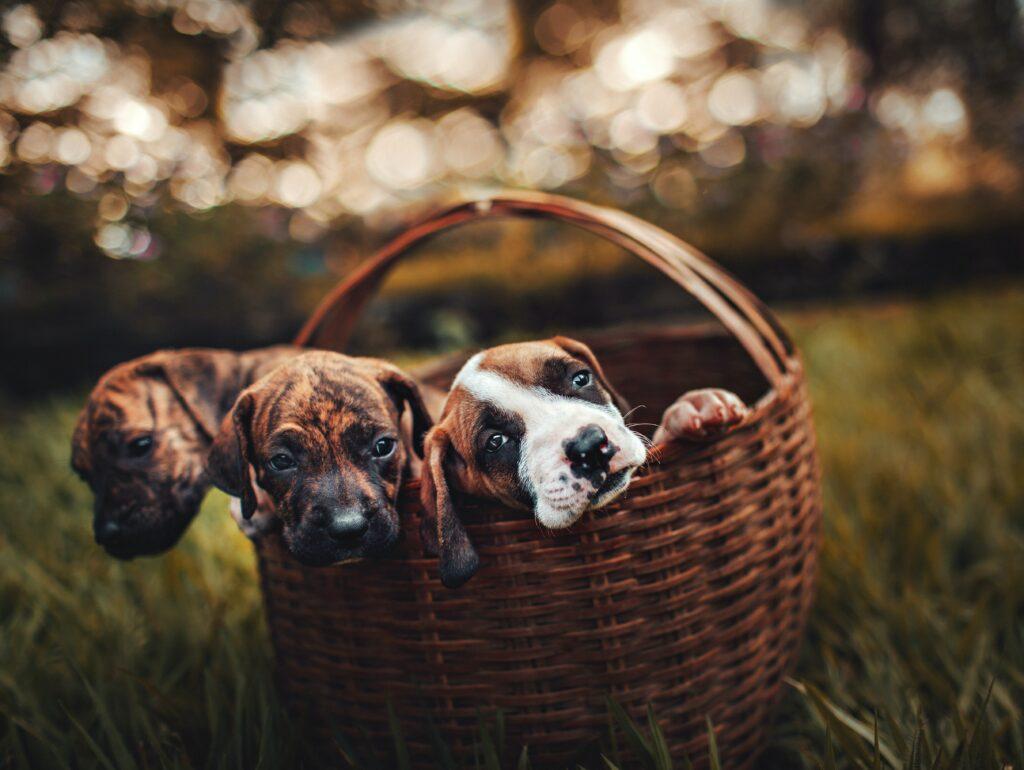
Wrong! Backyard breeders, those who are breeding just for the profit, do not do any health screening. Unfortunately, they get away with this quite frequently. These poor puppies end up with so many health related issues. Did you know that golden’s are the poster child for bad hips and joints, due to people not doing proper health checks and background checks, and overbreeding them? Yes, the parents may seem healthy and well taken care of, vet records look good, vaccinated, but how about their joints and eyes?
I can’t tell you how many broken hearts I have seen, because someone brings in a 9 month old puppy that has bilateral hip dysplasia, so bad that there is barely a socket. In these cases, each hip can cost up and above $10,000 each, not to mention the elbows and the knees will most likely be terrible. Now, this adorable 9 month old otherwise healthy puppy is looking at a lifetime of extreme pain, and being completely crippled by age 2 without extreme surgeries.
This is not that uncommon; I just had a case last week. This scenario is completely preventable as well if the breeders had just done their part. Even if you have dog insurance, 20% of $20,000+ in surgeries is still a good chunk of change. Goldens are not the only breeds affected, many large breeds suffer from hip and joint arthritis. Small breeds tend to get luxating patellas and eye issues, which can also be genetic. If the parents have a major joint issue, you can bet the pups may as well.
What can you do as a potential adopter? Ask to see the hip and elbow certifications, prior to visiting a puppy. Do not visit the puppy before asking, you will fall in love with the pup and take him/her home, trust me😊 Make sure that the owners have done either OFA certification of both hips and elbows, or at the very least Pennhip certification. If either of the parents is under 2 years of age, you can bet they did not do the certifications, as they pup needs to be at least 2 years of age to OFA certify the hips, and at least 6-9 months for pennhips.
These are not perfect, however, they are a good indicator of future health concerns. Do not adopt a pup from any breeder with hips that are less than “good”. They go “excellent”, then “good”, “fair”, and of course “poor”. Fair and poor are obviously bad, and should not be ever bred. A first puppy wellness exam is not good enough. They are just checking teeth, weight, and for hernias (also genetic). This will absolutely not tell you if this pup will be healthy still in 9 months.
Now, if you find yourself adopting a puppy or adult dog from a shelter, make sure they have a proper vet examination prior to taking them home. You usually have 3 days to do so. I have had many people take home a dog to find out that the knees both have CCL tears or severe dysplasia. Unfortunately, you can’t insure this with any pet insurance, as it was a previous condition. Make sure that you are in a financial spot to take care of this sweet dog, so he/she is not carted back to the shelter and stressed even more.
We can definitely help you with bracing the CCL tears if needed, however, make sure you know exactly what health issues there are prior to adopting. If you adopt a puppy, I certainly would get insurance right away. Also, there are many good breeders, who have generations upon generations of certified dogs, all health screened and with sound hips. Just make sure you find the right one.
The takeaway here is that it is always a good idea to health screen and find out the history of your potential new family member, prior to adopting. Even if the breeder has a health guarantee, could you honestly take back a 9 month old puppy that your family has bonded with, knowing they will be most likely put down? It breaks my heart to talk to someone that has a very young dog with preventable diseases.
Unfortunately, by purchasing these dogs to ‘save’ them from the breeder is just encouraging that breeder to keep going. The only way to stop the cycle is to stop purchasing puppies from breeders who do not do the proper health screens. If purchasing a small breed, such as a breed that is brachycephalic or a “squished” cute nose, make sure the eyes have been certified. These breeds are very prone to cataract issues, and can go blind at a young age without surgery.
Perhaps instead of going to a breeder, it is better to adopt from the shelter, as most shelter dogs come with a full vet exam, and at least you will know what they have prior to adopting and can prepare. Most shelters have certified technicians and vets on staff, that would be more than happy to explain any health issues, and what you are looking at. If you have any questions, or need advice, always feel free to contact us or visit our Facebook Page for more tips!